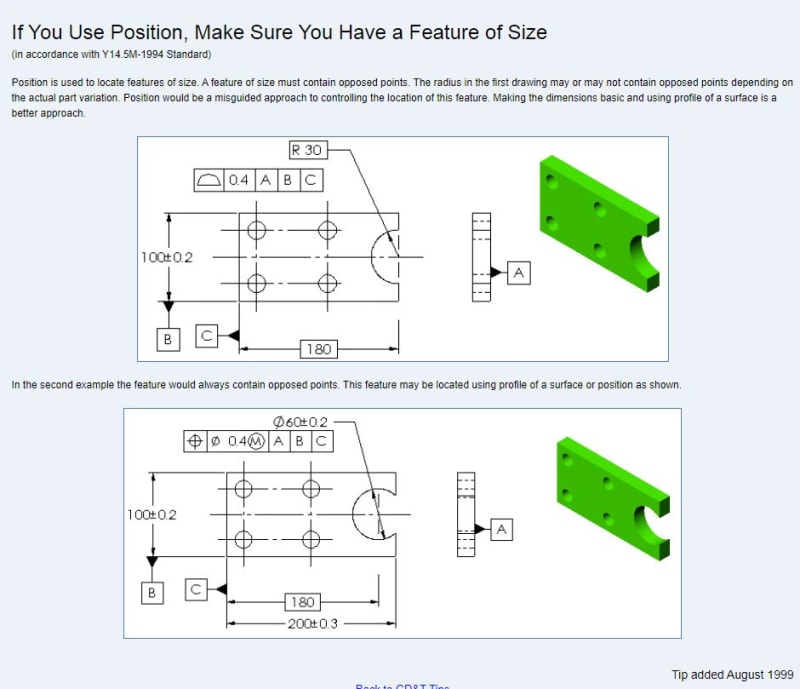dthom0425
Mechanical
- Dec 6, 2018
- 46
Hi all,
Let's say you have a thick plate, and on the edge of the plate you cut a blind hole so the center of the hole is coincident with the edge of the plate. You end up with a semi circle cut...basically an open ended hole.
Can a positional tolerance apply to this type of feature or is profile the more correct control?
Thanks for the help
Let's say you have a thick plate, and on the edge of the plate you cut a blind hole so the center of the hole is coincident with the edge of the plate. You end up with a semi circle cut...basically an open ended hole.
Can a positional tolerance apply to this type of feature or is profile the more correct control?
Thanks for the help

